What are PICC lines?
A PICC line is a small and flexible tube (catheter) that is put into a vein. These lines are inserted into a vein in the arm which is guided to a larger vein within the chest. A midline catheter, however, is inserted into the crook of the inner arm or into the upper arm. A midline catheter is shorter than a PICC line, ending below the armpit, while the PICC line goes all the way into the chest. These catheters allow a patient to have long-term IV medicinal treatments.
Why would I need a PICC line or a midline catheter?
- For long-term IV therapy. Someone may need long-term exposure to antibiotics or chemotherapy for weeks to months. PICC lines allow patients to be treated in hospitals, clinics, or in the comforts of their own home.
- PICC or midline reduces the need to constantly change an IV. Likewise, if a medication or treatment is harmful to veins, getting treated using a PICC or midline can reduce or prevent any damage to the skin or veins during treatment.
- You are often in need of blood transfusions and blood tests. Blood can easily be collected through a PICC or midline. So, if you are constantly needing to have blood drawn or have transfusions, a PICC or midline allows these procedures to be quicker, easier, and less painful.
Home care instructions:
- Always wash your hands before and after handling any part of your catheter. Avoid touching your catheter unless it is absolutely necessary that you do so.
- Clean the end of the catheter tubing before use. Before attachment and after detachment of your catheter’s tubing, the ends of the tubing must be thoroughly cleaned. Otherwise, you are risking infection. Take lots of precaution when cleaning the tubing. Wash your hands well, put on medical gloves, and use a brand new alcohol pad to rub the ends of the tubing. Never reuse an alcohol pad.
- Sometimes you may need to clamp your catheter, like when the tubing is being changed. Clamping is needed so that air does not get into your catheter. Ask your caregiver or nurse to clamp your catheter for you, or to show you how.
- Changing the caps and tubing on catheter lumens is extremely important and must be done regularly, as well as tubing. Ask your caregiver how often this must be done.
- Make sure to secure any loose or extra tubing by looping it. This will prevent your tubing from being caught on anything and slipping or being ripped out of place.
When do I change the bandages or dressing on my PICC or midline?
Your nurse or caregiver will change the bandages the day after your PICC or midline is put in. After the initial dressing change, ask your nurse or caregiver how often the bandages must be changed. If there are no signs of irritation, then a weekly change of bandages is a good rule of thumb. However, your bandage must be changed immediately if it gets wet, moist, loose, or dirty. The bandage should also be changed if it has moved out of place or no longer covers the insertion point.
How can I clean the area around the insertion point?
Make sure to check your insertion point and the skin around it on a daily basis. Always look for any signs of infection or irritation. Clean your skin after every single bandage change.
- Whenever it is time to clean the area, make sure you have set up a clean workspace far away from any open windows, heating or A/C ducts, and make sure it is clear of any dust. Make sure you are in a well-lit area. You will need the following tools:
- Liquid pump soap, or waterless soap, used to wash your hands
- Paper towels for drying your hands
- A trash bag
- Solution to clean your skin. Your healthcare provider or caretaker will advise you on the best solution to use
- New gauze, medical tape, or medical adhesive. Make sure to have enough medical tape or adhesive on hand to secure your bandage well
- New, sterile medical gloves and a medical mask if you have been advised to use one
- Wash your hands and put on your medical gloves. Put on your medical face mask if advised. Gently put pressure on the insertion point. If you feel pain, stop immediately and call your caregiver.
- Gentle remove your old bandage and discard it into the trash bag. Throw away your medical gloves along with the bandage and put on new ones.
- Inspect your skin for any swelling, redness, or blood/fluid. Call your caregiver if you notice any of these things.
- Clean the area around your catheter. Use the solution that your caregiver has provided for you. Avoid moving the catheter in any way. You can lightly scrub your skin with caution. Make sure to allow your skin to dry after you have cleaned it.
- Put on a new, clean bandage. When using a gauze bandage, gently place the bandage over the insertion point. Secure the bandage well with medical tape on all edges. If you are using a clear adhesive bandage, carefully place it over the area slowly. Smooth the bandage gently to remove any wrinkles in the adhesive that may allow air or germs in. Remove and throw away your gloves and mask, and proceed to thoroughly wash your hands.
When and how do I flush my PICC or midline?
Flushing is done to prevent any blockage in your catheter. This is done by pushing solution or medicine through your catheter using a syringe. You or your caregiver can flush the catheter. Your catheter may need to be flushed:
- Before giving yourself medicine or treatment
- After giving yourself medicine or treatment
- Once a day, if advised
- Once a week, if advised
What should I use to flush my PICC or midline?
Your caregiver will always advise you on which solution you should be using. You may need to use one of both of the following:
- Saline: this easy to find solution can be injected into your catheter to flush it out and clean it, allowing your catheter to stay open and clear.
- Heparin: this solution not only cleanses but also helps prevent blood clots from forming within your catheter. This solution can produce issues like allergic reactions, bleeding, and heparin-induced thrombocytopenia.
When should I call my caretaker?
Call your caretaker if:
- You have fever
- Veins in your neck and chest are becoming more prominent
- Your face, neck, or arm are swollen or more red on the side that your catheter is in
- You feel pain in your neck, back arm, or shoulder
- You see air in the tubing
- You notice the catheter is getting shorter or longer
- There is new or more blood on the bandage
- You feel pain when liquid is going through your catheter
- You need to change your bandage and do not know how
- You run out of supplies for your catheter
When should I seek emergency help?
Call 911 and go to the emergency room if:
- The area around the insertion point is painful or oozing any sort of discharge
- You notice a red line going up your arm where your catheter is inserted
- You notice blisters around the insertion point
- Your PICC or midline has a crack or hole in it
- Your PICC or midline falls or is pulled out by accident
- Your arms or legs feel warm or tender, they may also look red
- You have worsening chest pain and difficulty breathing
- Sudden lightheadedness
- New or sudden chest pain, new pain when breathing, or coughing up blood


